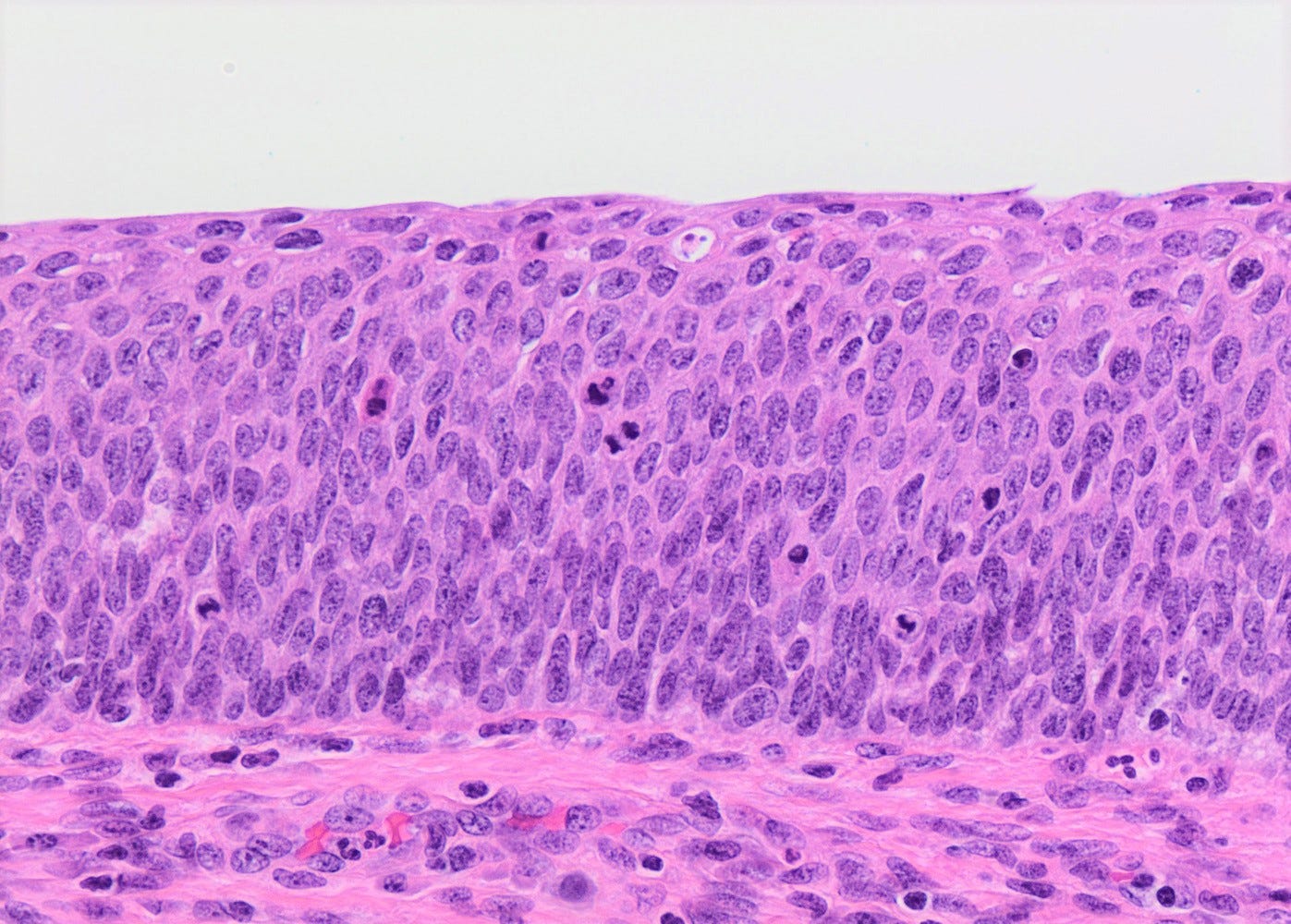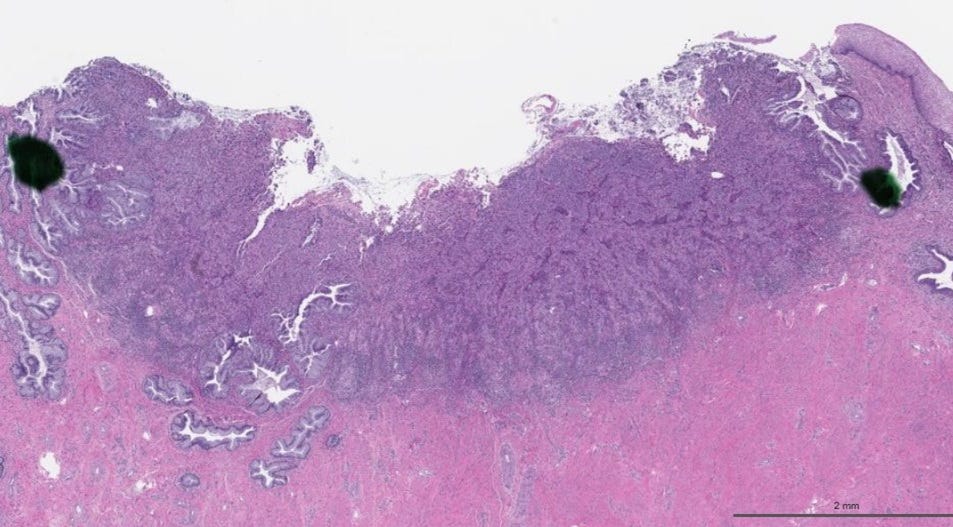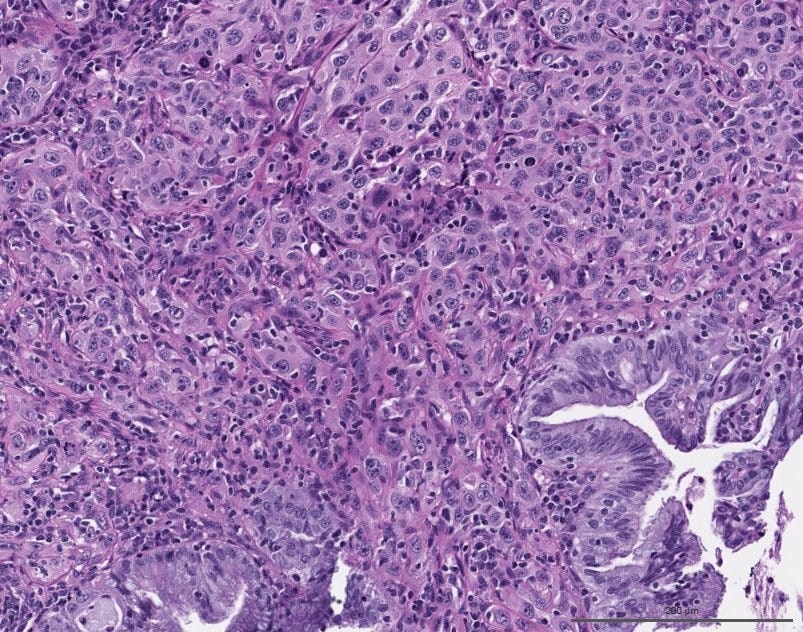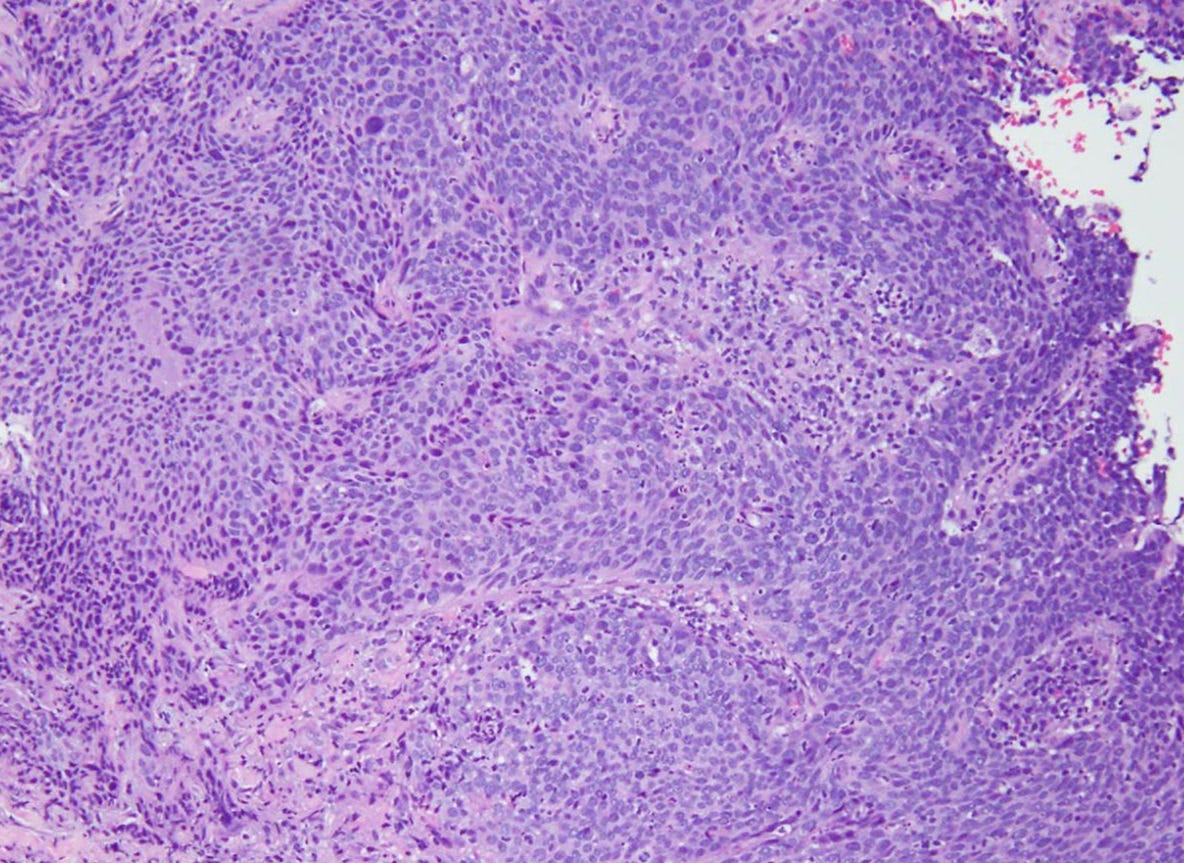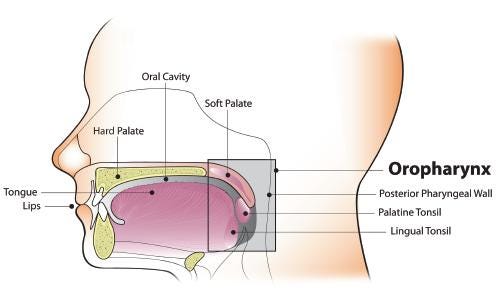Electron microscopy of HPV type 16 capsid protein, Image source, Wikipedia page
Basic facts about human papillomavirus (HPV) and cancer:
HPV has many low risk and high risk subtypes; HPV 16 and 18 are high risk subtypes that cause most HPV related cancers.
According to the Centers for Disease Control and Prevention, HPV infection causes 37,000 cases of cancer annually in the U.S. See also information from the National Cancer Institute.
>90% of cases of cervical cancer and anal cancer are caused by HPV infection.
HPV causes most cancers at other sites:
Vulva and vagina - 70%
Penis - 60%
Oropharynx (back of the throat) - 60-70%, often in combination with tobacco and alcohol
HPV vaccination is effective in preventing most of these cancers. Vaccination is important because almost every unvaccinated person who is sexually active will get HPV at some time in their life. Click here to see a 2020 study from the New England Journal of Medicine about how this vaccine prevents cervical cancer.
HPV related cervical cancer
HPV infection of the cervix can cause a low grade squamous intraepithelial lesion (with a low risk of progression to cancer), cancer precursors with a high risk of progression to invasive cancer (high grade squamous intraepithelial lesion or adenocarcinoma in situ) or invasive cancer itself (squamous cell carcinoma or adenocarcinoma)
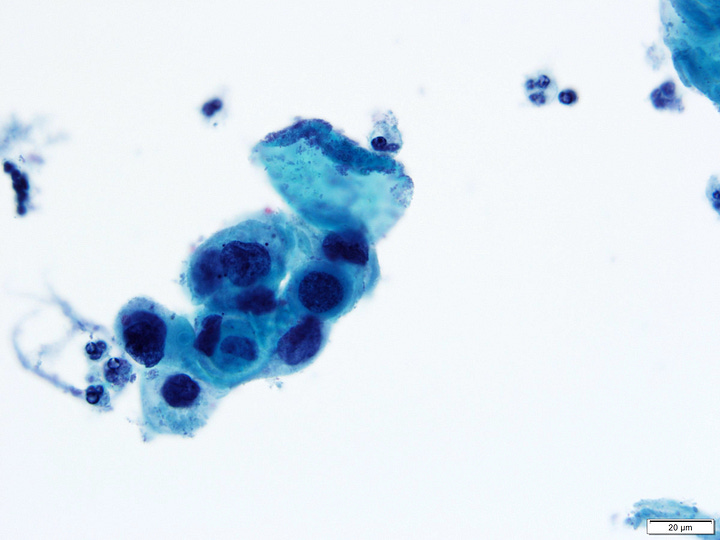
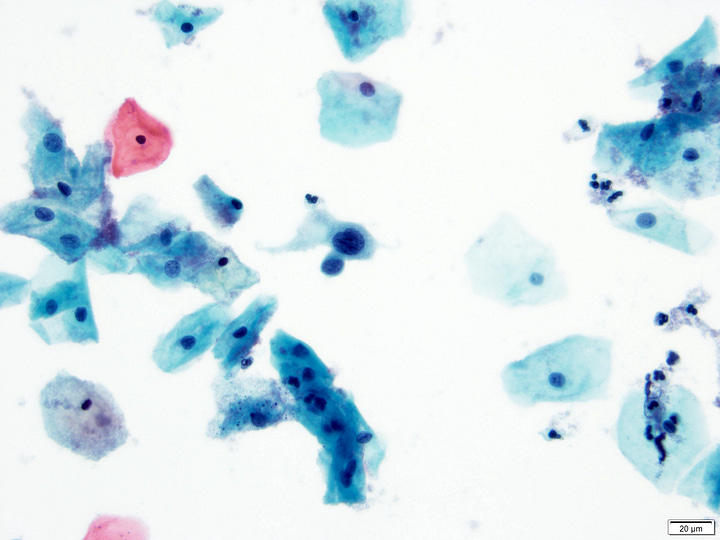
Cervix - pap smear: The specimen on the left side was called HSIL - high grade squamous intraepithelial lesion, a premalignant lesion typically caused by HPV which confers a high risk for cervical cancer. The specimen on the right side, particularly the cell is the center, was called ASC-H, “atypical squamous cells - cannot exclude HSIL”. This means it is suggestive but not diagnostic of HSIL. Pathologists cannot “guess” about a cancer diagnosis - if they are not sure (often because there is not enough tissue), even after showing the case to others, the proper diagnosis is one that indicates this uncertainty, such as ASC-H. Image source
Cervical biopsy - HSIL. This image from a biopsy shows the architecture of the atypical cells in tissue compared to the “free floating” cells in the pap smear above. The diagnostic features are striking nuclear atypia involving all layers of the epithelium. Image source

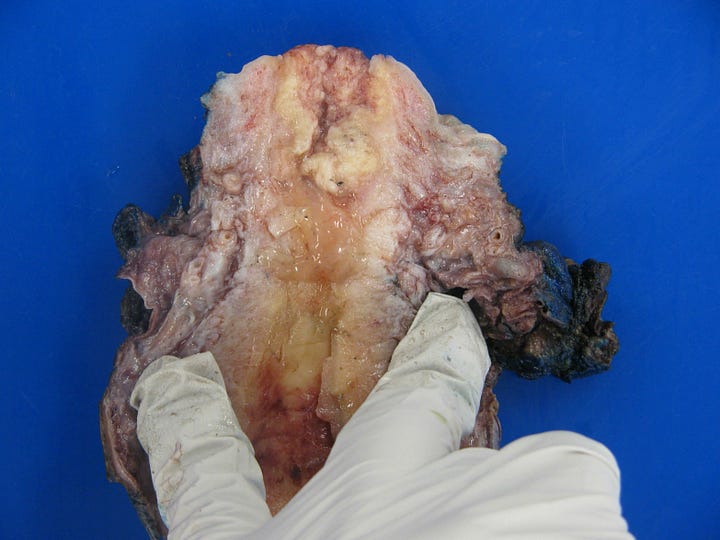
Cervical squamous cell carcinoma specimens contributed by Gulisa Turashvili, M.D., Ph.D. The image on the left has obvious cancer of the cervix in the center of the cervix. The image on the right is a uterus that is sectioned and open showing cervical cancer at the top invading the uterus below.
Cervical squamous cell carcinoma - HPV related - sheets of atypical malignant cells (top image shows cancer between the black ink marks).
HPV related cancer of the head and neck
HPV also causes an increasing number of cancers of the oropharynx (tonsils, base of tongue and adenoids).
Affects both males and females, more common in white males, mostly younger than 65.
Incidence is growing rapidly and it is expected to continue to rise for several decades until HPV vaccination is more widespread.
Oral sexual contact is a major risk factor, but not alcohol or tobacco (smoking or chewing)
HPV is thought to cause 70% of oropharyngeal cancers in the United States.
The oral cavity includes the lips, the front 2/3 of the tongue, the floor of the mouth and the hard palate. The oropharynx includes the palatine and lingual tonsils, the back 1/3 base of the tongue, the soft palate and the posterior pharyngeal wall. Image source
HPV positive oropharyngeal squamous cell carcinoma. Image source
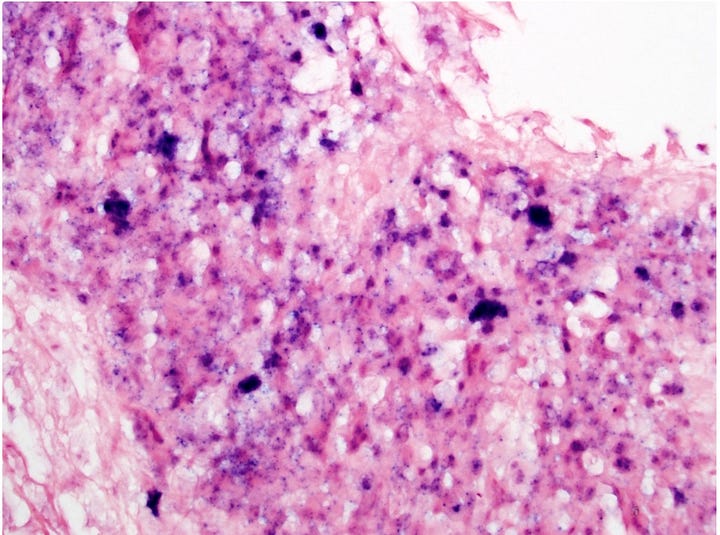
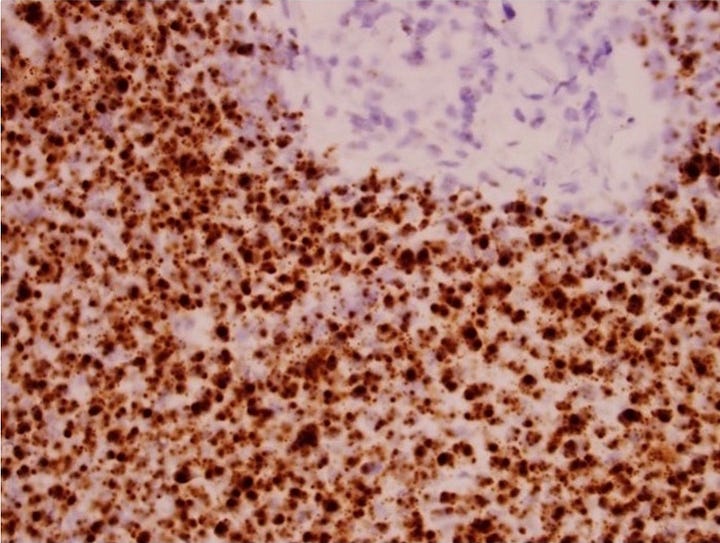
Detection of high risk HPV DNA (left, dark purple) and RNA (right, brown) by molecular techniques in oropharyngeal squamous cell carcinoma. The nuclei of the cancer cells containing copies of high risk HPV DNA or RNA are highlighted. The higher the number of copies, the higher the intensity of the stain.
Click on these links for more information on these cancers that are also commonly caused by HPV: Anus, Penis, Vulva .
End of essay
Index to Nat’s Substack articles
If you like these essays, please share them with others.
Follow me on Substack or LinkedIn or through our Curing Cancer Newsletter .
Follow our Curing Cancer Network on LinkedIn and Twitter. Twice a week we post interesting cancer related images of malignancies with diagnoses.
Latest versions of our cancer related documents:
American Code Against Cancer (how you can prevent cancer)
Email me at Nat@PathologyOutlines.com - unfortunately, I cannot provide medical advice.
I also publish Notes at https://substack.com/note. Subscribers will automatically see my notes.





